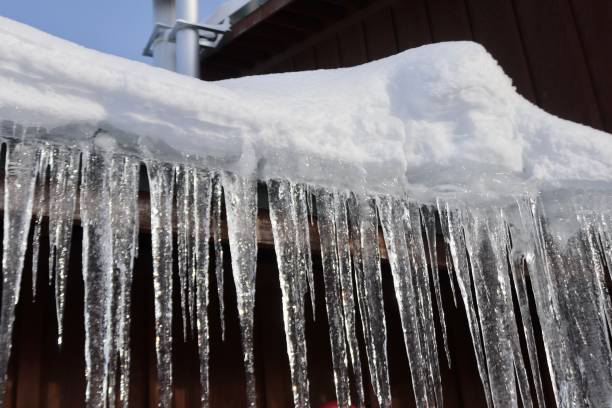Shielding Pipes from Cold Weather Issues: Essential Approaches
Shielding Pipes from Cold Weather Issues: Essential Approaches
Blog Article
On this page underneath you will discover a good deal of sensible material on the subject of Winter Plumbing Precautions: Preventing Frozen Pipes.

Cold weather can ruin your plumbing, especially by freezing pipes. Right here's just how to prevent it from happening and what to do if it does.
Introduction
As temperature levels decrease, the danger of icy pipes increases, potentially bring about pricey repairs and water damages. Comprehending exactly how to stop frozen pipelines is critical for house owners in cool environments.
Comprehending Icy Pipes
What creates pipes to freeze?
Pipelines freeze when subjected to temperature levels listed below 32 ° F (0 ° C) for expanded durations. As water inside the pipelines ices up, it increases, putting pressure on the pipeline walls and possibly creating them to break.
Threats and problems
Frozen pipes can lead to water system disruptions, residential or commercial property damages, and expensive repair services. Burst pipelines can flooding homes and cause comprehensive architectural damage.
Signs of Frozen Pipeline
Identifying frozen pipelines early can prevent them from breaking.
Just how to determine frozen pipelines
Try to find reduced water circulation from taps, uncommon odors or sounds from pipes, and noticeable frost on subjected pipelines.
Prevention Tips
Insulating prone pipes
Cover pipes in insulation sleeves or make use of warm tape to safeguard them from freezing temperatures. Focus on pipelines in unheated or outside areas of the home.
Home heating methods
Maintain indoor rooms properly warmed, specifically locations with plumbing. Open cupboard doors to enable cozy air to flow around pipes under sinks.
Securing Outdoor Plumbing
Yard hoses and outside taps
Disconnect and drain garden hose pipes prior to winter months. Install frost-proof faucets or cover outside faucets with insulated caps.
What to Do If Your Pipes Freeze
Immediate activities to take
If you believe frozen pipes, maintain faucets open to eliminate stress as the ice thaws. Utilize a hairdryer or towels taken in warm water to thaw pipes slowly.
Long-Term Solutions
Architectural adjustments
Think about rerouting pipes away from exterior wall surfaces or unheated locations. Add added insulation to attic rooms, cellars, and crawl spaces.
Upgrading insulation
Buy high-grade insulation for pipelines, attics, and walls. Appropriate insulation helps maintain regular temperatures and decreases the risk of icy pipes.
Verdict
Preventing icy pipes calls for aggressive procedures and quick feedbacks. By comprehending the reasons, indicators, and safety nets, home owners can protect their plumbing during cold weather.
5 Ways to Prevent Frozen Pipes
Drain Outdoor Faucets and Disconnect Hoses
First, close the shut-off valve that controls the flow of water in the pipe to your outdoor faucet. Then, head outside to disconnect and drain your hose and open the outdoor faucet to allow the water to completely drain out of the line. Turn off the faucet when done. Finally, head back to the shut-off valve and drain the remaining water inside the pipe into a bucket or container. Additionally, if you have a home irrigation system, you should consider hiring an expert to clear the system of water each year.
Insulate Pipes
One of the best and most cost-effective methods for preventing frozen water pipes is to wrap your pipes with insulation. This is especially important for areas in your home that aren’t exposed to heat, such as an attic. We suggest using foam sleeves, which can typically be found at your local hardware store.
Keep Heat Running at 65
Your pipes are located inside your walls, and the temperature there is much colder than the rest of the house. To prevent your pipes from freezing, The Insurance Information Institute suggests that you keep your home heated to at least 65 degrees, even when traveling. You may want to invest in smart devices that can keep an eye on the temperature in your home while you’re away.
Leave Water Dripping
Moving water — even a small trickle — can prevent ice from forming inside your pipes. When freezing temps are imminent, start a drip of water from all faucets that serve exposed pipes. Leaving a few faucets running will also help relieve pressure inside the pipes and help prevent a rupture if the water inside freezes.
Open Cupboard Doors
Warm your kitchen and bathroom pipes by opening cupboards and vanities. You should also leave your interior doors ajar to help warm air circulate evenly throughout your home.

Do you really like more info about Prevent Frozen Pipes ? Write a remark directly below. We would be pleased to find out your opinions about this blog post. Hoping that you come back again in the near future. Make sure you take a moment to share this content if you enjoyed reading it. I cherish your readership.
Visit The Following Page Report this page